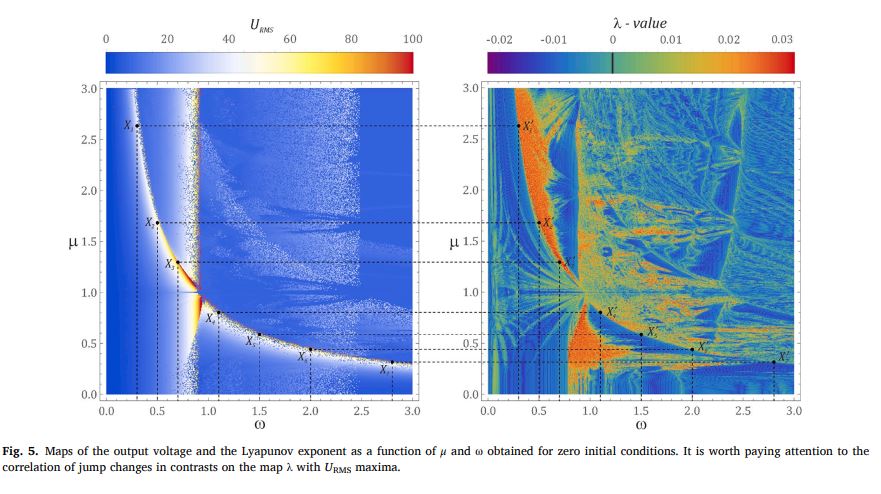Abstract:
This paper presents the results of modelling a new nonlinear multi-stable QZEH (quasi-zero energy harvester) system for harvesting energy from vibrating mechanical devices. Detailed tests were carried out on the system model, which consisted of a beam and a system of springs, which were used to determine the potential of a quasiflat well. Two-dimensional distributions of the Lyapunov exponent were output from the numerical model, using the assumed range of variability within the control parameters, and plotted as a map in multi-color. These maps are related to diagrams of the RMS values of the voltage that is induced on the piezoelectric electrodes. To identify the optimal conditions for harvesting energy from mechanical vibrations, a multi-colored map of the RMS voltage values was produced. Its reference to the Lyapunov distribution map, showed that in the chaotic
motion zones, energy harvesting is reduced. Based on the established sections of the Lyapunov exponent, diagrams of solutions (DS) showing the number of coexisting solutions and their periodicity were drawn. Multiple solutions and basins of attraction have been identified. On their basis it was possible to estimate the probability of obtaining a solution with the greatest energy harvesting efficiency. Moreover, a method of acting on the
solution trajectory, by means of an impulse initiated at a specific moment in time, has been proposed. The results of the model tests were visualized as multi-colored maps of impulse excitations. The direct reference of the results of QZEH model tests to the tristable energy harvesting (TEH) system clearly indicates the advisability of using the QZEH system in terms of higher excitation amplitudes. The QZEH system also shows an improved ability to harvest energy in the low range of values of excitation frequencies.

.
Authors: Jerzy Margielewicz, Damian Gąska, Grzegorz Litak, Piotr Wolszczak, Daniil Yurchenko
This paper was published in: Applied Energy, Vol. 307, 118159
To read full text, please visit publisher site or download pdf file.